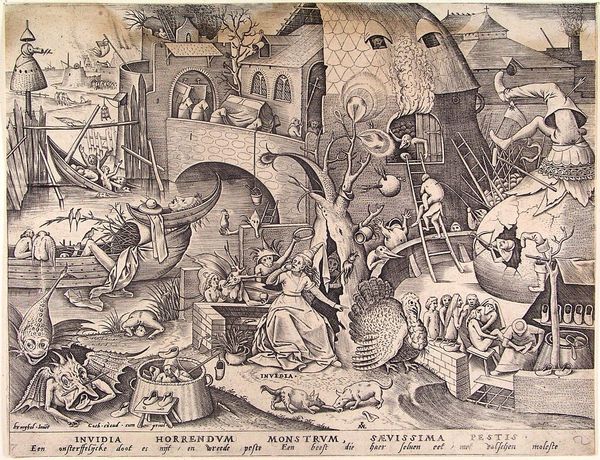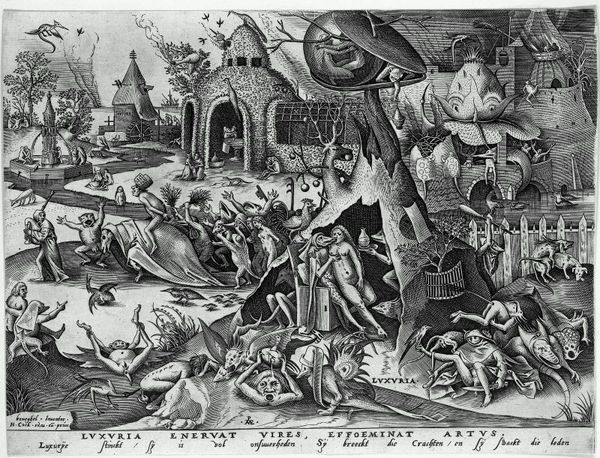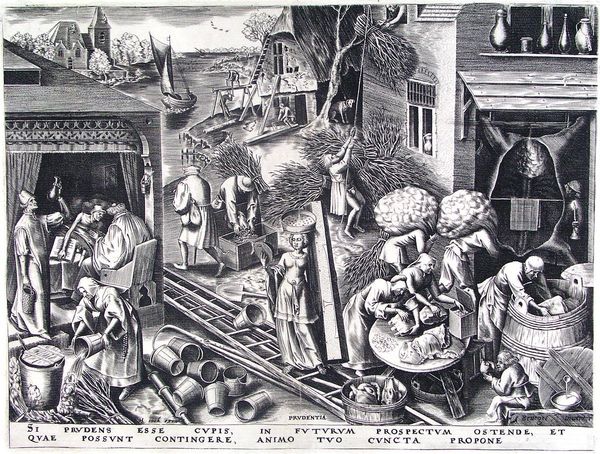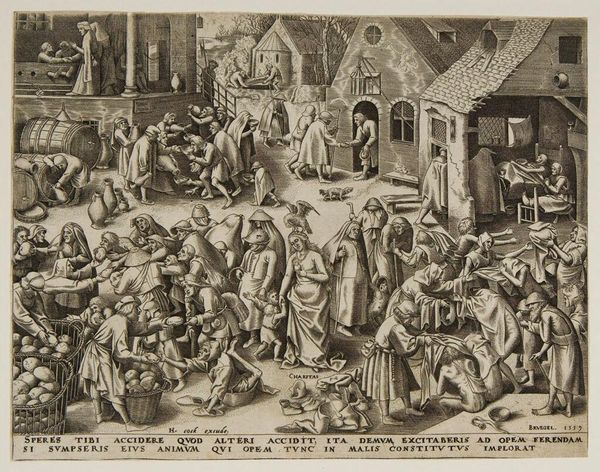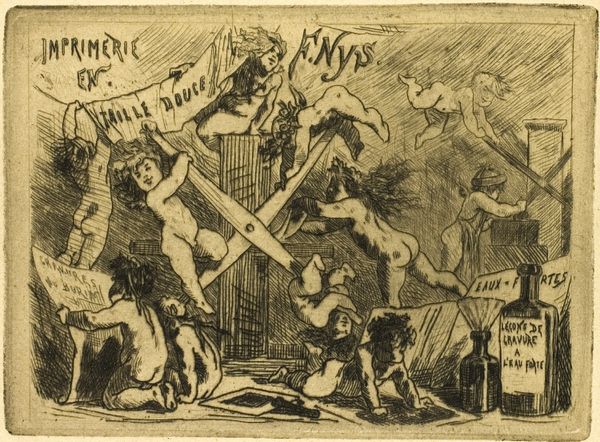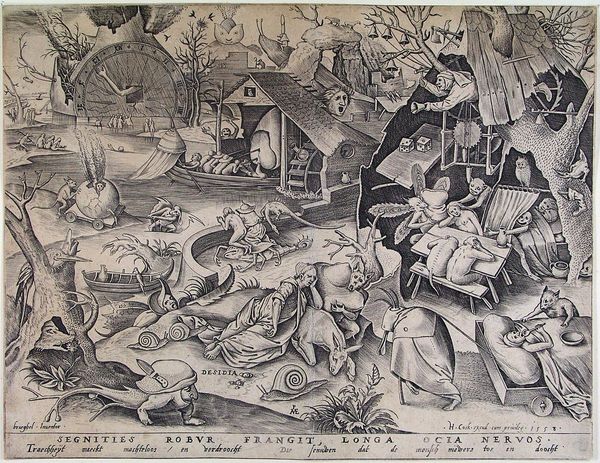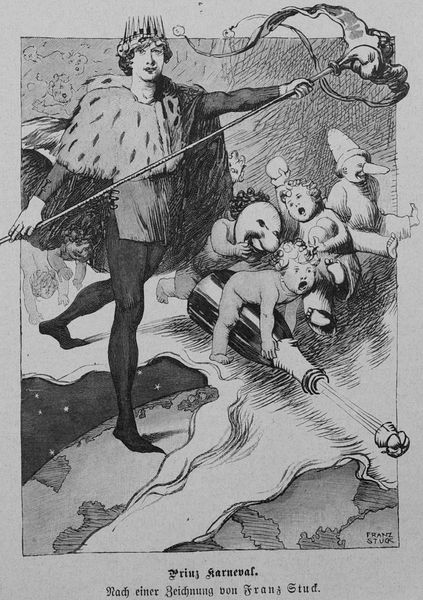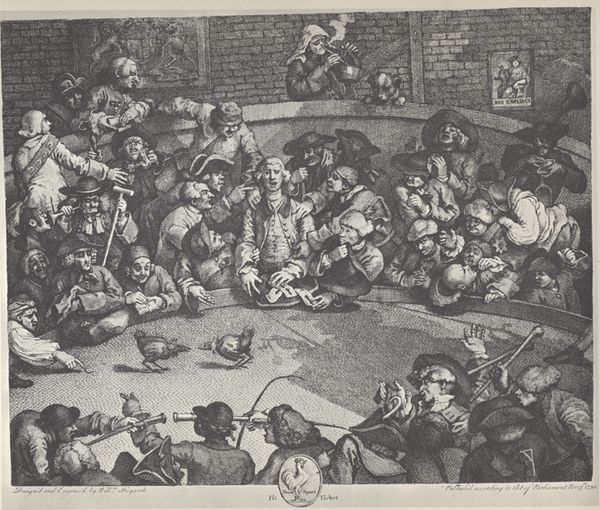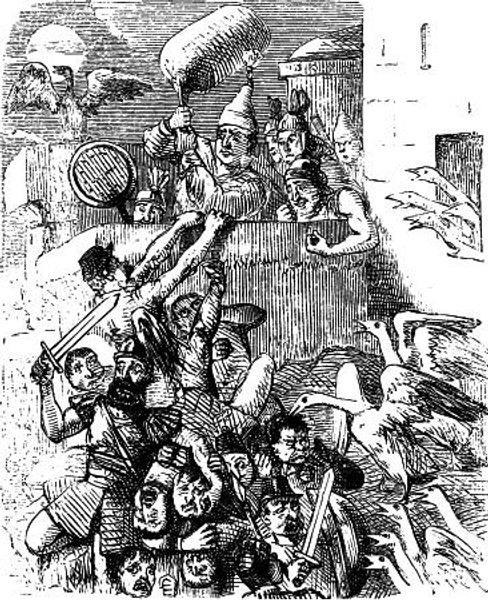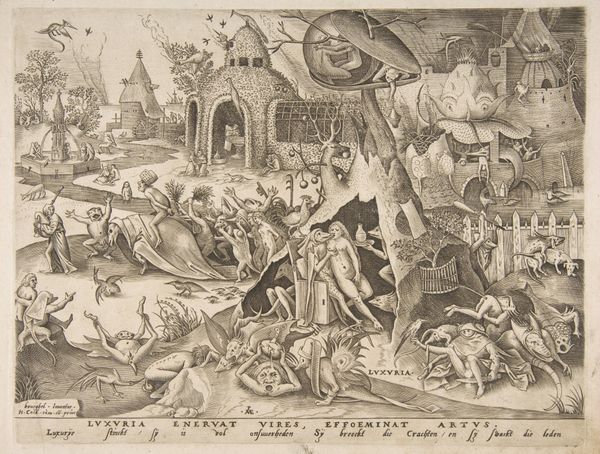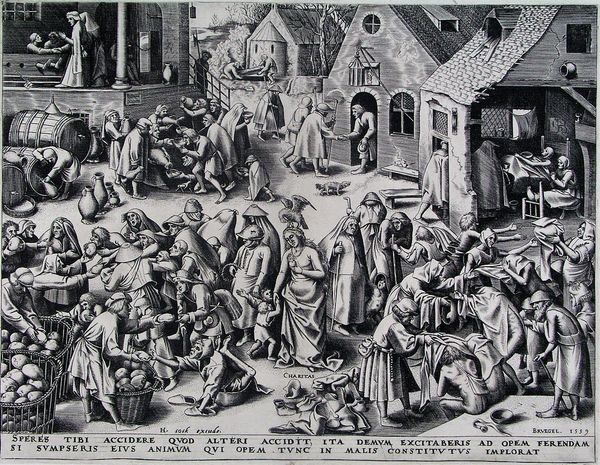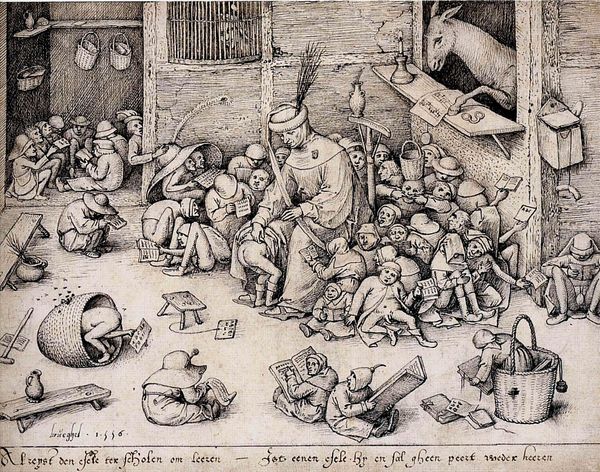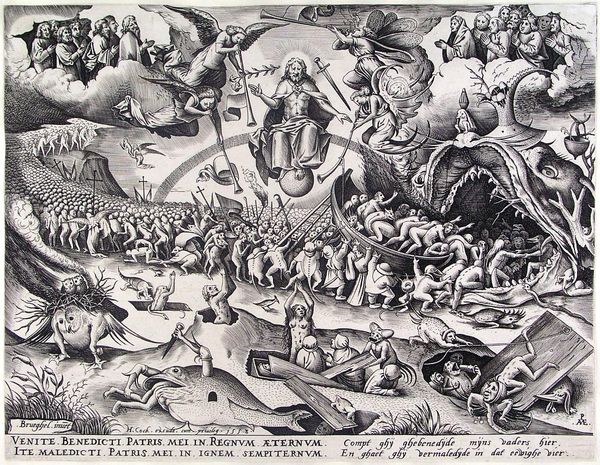
The same God so that he obtained of the Magus was by demons be pulled in pieces
0:00
0:00
engraving
#
allegories
#
medieval
#
allegory
#
symbol
#
mannerism
#
figuration
#
surrealism
#
christianity
#
symbolism
#
history-painting
#
engraving
#
christ
Copyright: Public domain
Curator: I’m immediately drawn into this chaotic vortex. It feels like a carnival gone horribly wrong, a dark parody teeming with…are those demons? The overall tone feels satirical, but with a very uneasy edge. Editor: You've keenly observed that unsettling energy! What we’re looking at is an engraving titled "The same God so that he obtained of the Magus was by demons be pulled in pieces" after Pieter Bruegel the Elder. It's a fascinating work that draws on allegorical and symbolic traditions to communicate themes tied to Christianity and morality. Curator: "Pulled in pieces" is certainly the feeling I get! I see this jumble of figures, half-human, half-beast, engaged in all sorts of bizarre activities. Upside-down bodies, creatures with odd proportions—it's a riot of the grotesque. But there’s got to be more than just chaos here. What about the woman on the right near the entrance? Editor: Indeed! The central figure represents Saint John Chrysostom, known for his powerful sermons. He’s casting out these demonic influences that have taken root within society. The imagery echoes older themes, the temptation of St. Anthony, which emphasizes human virtue versus demonic corruption. Curator: I see. So the figures, seemingly absurd, might be symbolic representations of human folly or moral decay? I notice one figure wearing a bishop’s hat! It sounds like a criticism on power or institutions gone wrong. Editor: Precisely! Bruegel was a master of embedding complex messages in seemingly simple scenes. Consider how the architecture shifts—from interiors to a distinct opening with pious observers looking out—drawing a contrast between corruption and goodness, which helps reveal those moral underpinnings you detected. Curator: And this complexity—I love how it encourages me to slow down and unravel meaning from layers of symbolism, not unlike a psychologist diving deep to understand human complexities. What about the artist? Editor: Bruegel's innovative blend of realism and fantastical elements makes the viewer participate, and confront unsettling truths beneath the façade of everyday life. "Medieval Surrealism!" Curator: What a wild world Bruegel created here. It really makes you consider the demons— both literal and metaphorical—we allow into our lives, into our societies, doesn't it? Editor: Precisely, and a fitting image to linger with, as we continue through the exhibit!
Comments
No comments
Be the first to comment and join the conversation on the ultimate creative platform.
